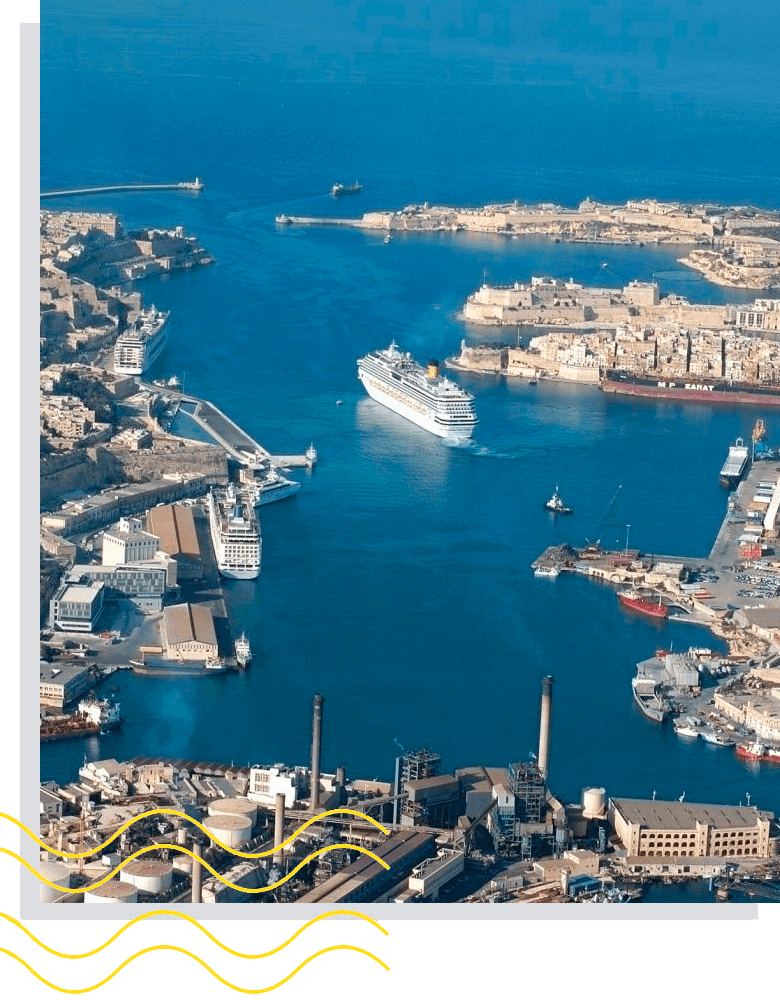Shore Excursions
Even though cruise ship dockings may only be for a few hours and one is docked in the majestic Gran Harbour, this is a great opportunity for a quick teaser of what the Maltese island have to offer, that will make you wanting to come back to Malta again. Depending on how much time you have with us on the island, I will make sure that you will get the best out of it.
Please do not hesitate to contact me for a proposal.

Exclusive Group tours
All the above Exclusive tours can be organized for larger groups. Activities can be mixed with History, Adventure, Fun, Food & Culture.
Please do not hesitate to contact me for a proposal.
Pre Historical Sites
Ghar Dalam – The Cave of Darkness
Malta’s oldest prehistoric site, with a mix of variety of ancient animal bones, fossil finds and human remains excavated in the upper layers while. The deepest layers of the cave date back to over 500,000 years ago and have revealed remains of a selection of Ice Age animals including dwarf elephants and mini hippos.
Pre Historic Temples
Considering the size of the island more than a handful of Pre-Historic sites can be found, qualifying for the protection of UNESCO World Heritage conservation. Amongst all the most popular are Hagar Qim Mnajdra and Tarxien Temples on the island of Malta and Ggantija Temples on the island of Gozo.
Ħal Saflieni Hypogeum
If you are limited for time on the island, I suggest you pay a visit to the Hal Saflieni Hypogeum. A labyrinth of underground chambers, this prehistoric burial site dates back to 3600 BC- 2500 BC and is one of the best-preserved subterranean monuments in Europe. Booking ahead is a must since a very limited number of visitors are allowed in per day.

Mdina – The Old Capital City & Rabat
Malta’s old Capital is a fortified City originally built by the Romans on a plateau specifically selected centuries before as the ideal location for the start of civilization on the island. Far from the harbors, built on high grounds Mdina offered the perfect shelter and refuge to the first settlers during the Bronze age, to the Phoenicians from the east, the Roman, Christian Byzantines, Arab tribes, Normans and the Aragones’ Kingdom until the arrival of the Knight of Malta. Today’s Mdina is characterised by both medieval and as well as baroque architecture. Malta’s Metropolitan Cathedral dominates the largest square and just beside stands the Bishop’s palace amongst other Noble houses that can be enjoyed while walking through the curved medieval streets. Entering Mdina through the 18th century gate is one of the location where the famous series Games of Thrones was filmed.
Rabat is the historical suburban town of Mdina. Rich with historical churches, convents and Roman catacombs, Rabat was also the place where the apostle Saint Paul lived for 3 months when the boat he was travelling was shipwrecked on the island around 60 AD and introduced Christianity on the island.
In the vicinity one can find;
Dingli Cliffs; one of Malta’s highest points offering spectacular views of the cliffs on the West of the island and the deep Blue Mediterranean sea.
Buskett Gardens is the largest Tree grove on the Maltese islands and formerly the Hunting grounds for the Knights of the Order of St. John. Amongst the rows of orange trees and green landscape, stands the fortified castle; Verdala Palace, which served as a humble hunting lodge for Grandmaster during hunts. Today Verdala Palace is the official summer residence of the President of the Republic of Malta.
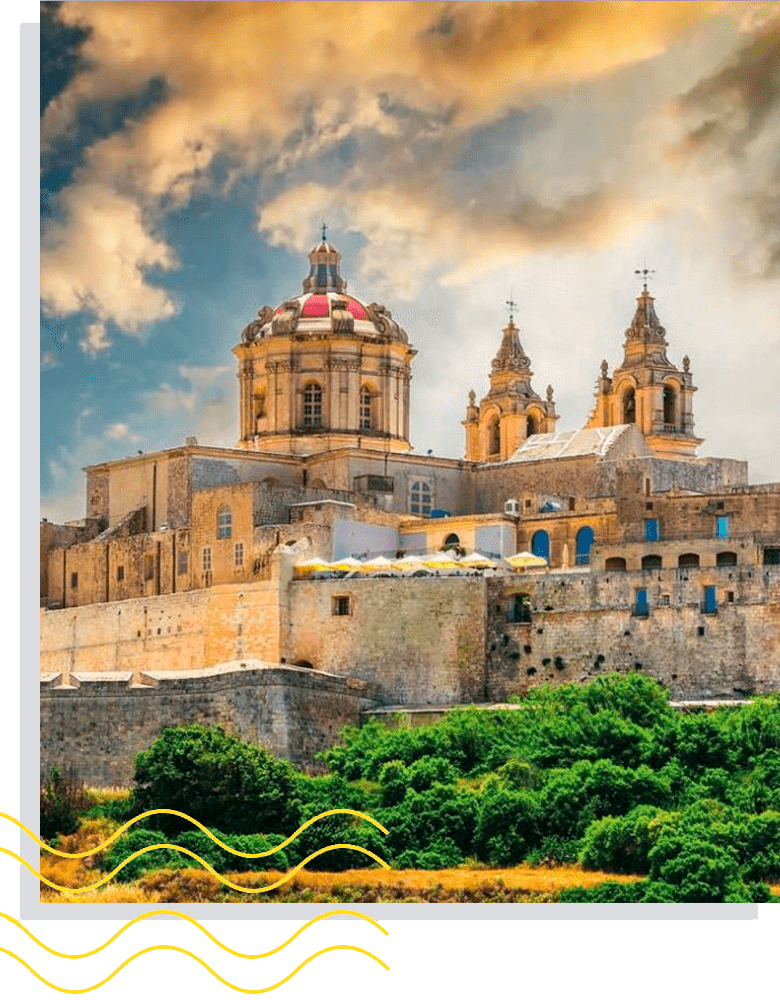
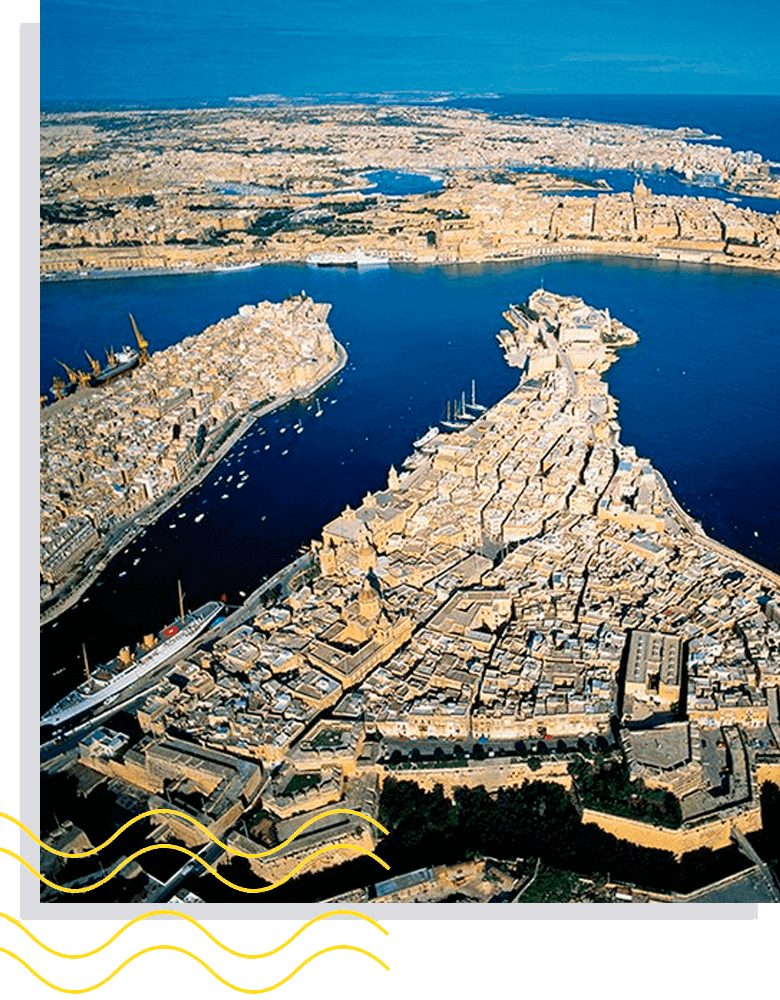
The 3 Cities – The Arrival of the First Knights of St. John on the islands of Malta
The 3 cities protected within the Cottonerra lines of Fortification are known to the locals as Birgu, Isla and Bormla, however since the 16th onwards, all the 3 villages received the titles of Citta Vittoriosa, Citta Senglea and Citta Cospicua respectively. These 3 cities are one of the eldest urban parts of Malta.
A complete harbour area with important historical evidence prior to the arrival of the Knights, the participation during 2nd World War and more recent times as a Naval base for NATO. There are various view points of the Grand Harbour and Valletta.
Valletta - The Baroque City
Valletta, Malta’s capital and a World Heritage site, is nothing short of an open-air museum. It is a living experience of Baroque architecture, a monument donated by the Knights of St John nearly five centuries ago. Throughout the years, Valletta has welcomed emperors, heads of state, artists and poets and is now the permanent seat of the Maltese government.
With plenty of quaint cafés and wine bars, the city is today one of Malta’s most visited site by tourists, hosting among others, the majestic St John’s Co- Cathedral, the imposing bastions and a treasure of priceless paintings including the largest and only signed painting of Caravaggio. It also provides a stunning snapshot of Malta’s Grand Harbour, often described as the most beautiful in the Mediterranean.
Valletta’s unique setting nowadays plays host to a series of cultural events, from plays at the Manoel theatre, concerts by leading opera singers and international performers. A hive of business activity during the day, the city switches to a slower gear for the night. Use it to your advantage to get away from the noise and take a stroll to admire the magic of the fortified capital amplified by the gentle lighting in the streets. Admire the bastion walls, the dense clusters of worn limestone buildings, the timber balconies, and imposing Churches.
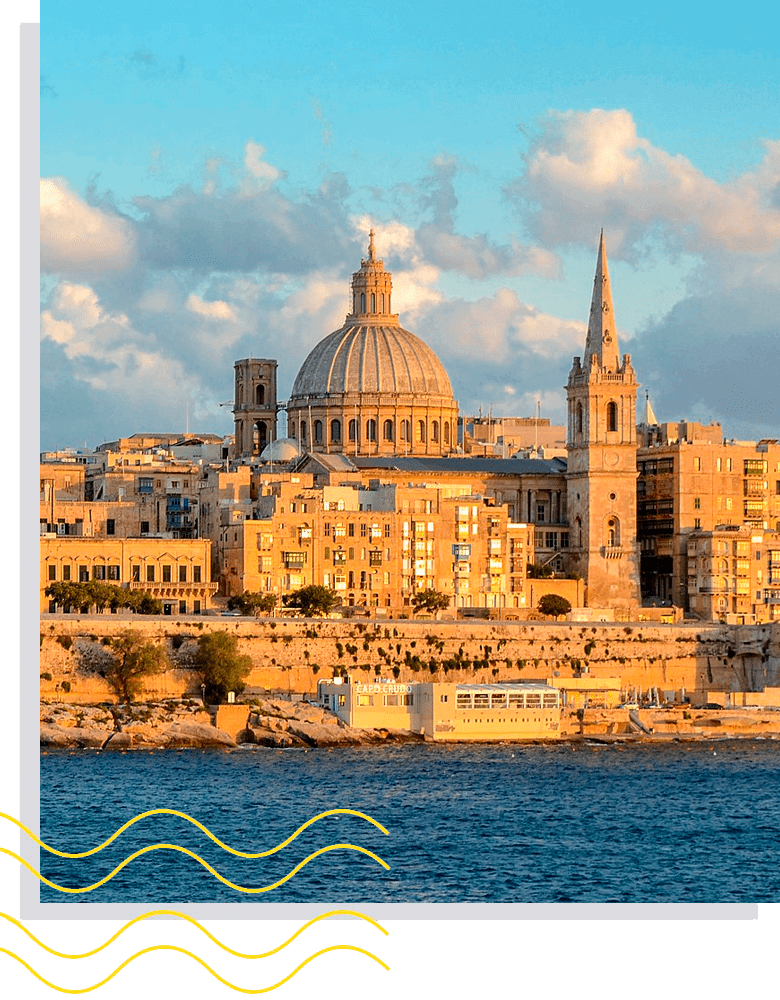

Marsaxlokk – This Fishing Village
The small and picturesque fishing village of Marsaxlokk (pronounced marsa-schlock – meaning the port in the South East) is located in the South-Eastern part of Malta.
Marsaxlokk fishing village is the main fishing harbour on the island. Traditional bright-coloured fishing boats called ‘Luzzus’ and larger fishing vessels line the sheltered harbour in a colourful display that has been the subject of countless photoshoots and postcards. During the week, fishermen coming in with their fresh catch take the fish to the fish market to be sold directly, to fish shops, restaurant owners and others gather in the early hours of the morning to buy fish for redistribution.
However, on Sundays, fish is sold directly to consumers by the fishermen from stalls in the Marsaxlokk Sunday fish market. Later during the day you can find a bigger flea market with a mix of items, such as local produce, handcrafted souvenirs and household goods.
Mosta Dome
The Parish Church of Santa Maria, better known as the Rotunda or Mosta Dome, was designed by the Maltese and built in the 19th Century, with a six-columned portico based on the Pantheon in Rome. A great dome and a prominent landmark, which can be seen from most parts of Malta. In order to build this church funds had been raised by the local people. It has a stunning gold and white interior with blue touches. In 1942 as more than 300 parishioners waited to hear Mass, the island was subject to an air raid attack when the Dome was hit. A bomb fell through it and Miraculously, the bomb failed to detonate – a replica of the 500KG bomb can be found in the sacristy.
Mosta’s titular feast – that of St. Mary or the Assumption of Our Lady – held on August 15th is a high point in the local religious celebrations. The people of Mosta rally in front of the Rotunda in a manifestation of joy, merrymaking and social wellbeing. Another miracle has happened on the above date and same year of 1942. This was a turning point during 2nd World War. The arrival of the surviving ships of Operation Pedestal.
On the 29th July 2018, Mosta Dome was given the title of Minor Basilica. A rewarding achievement for the community and the village of Mosta.
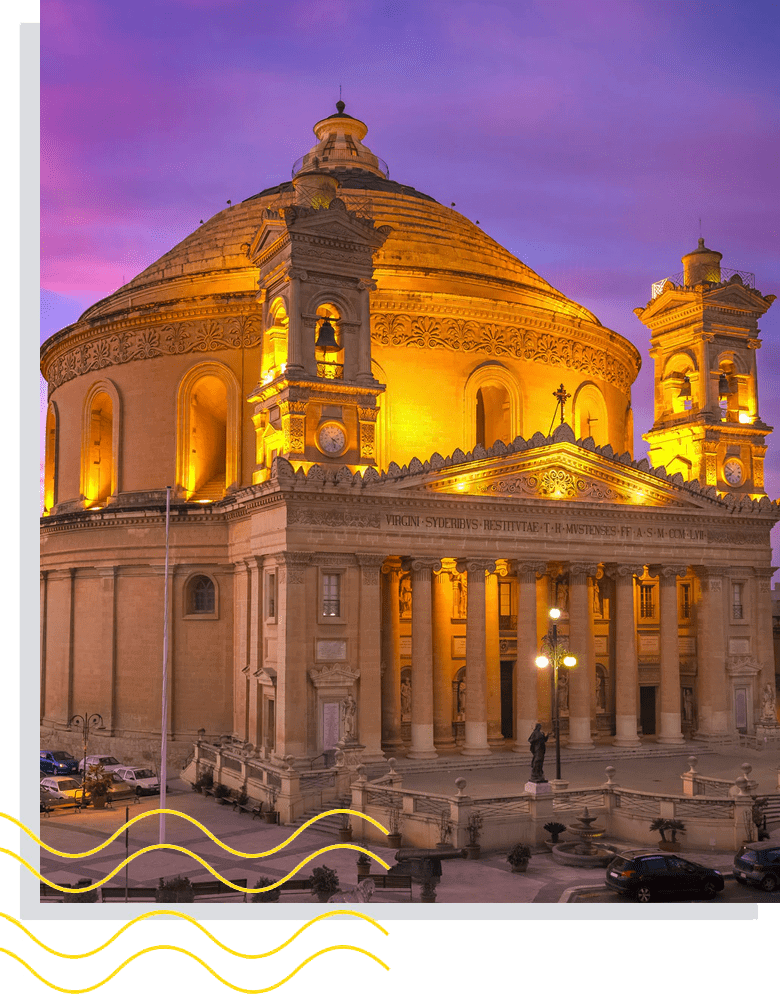
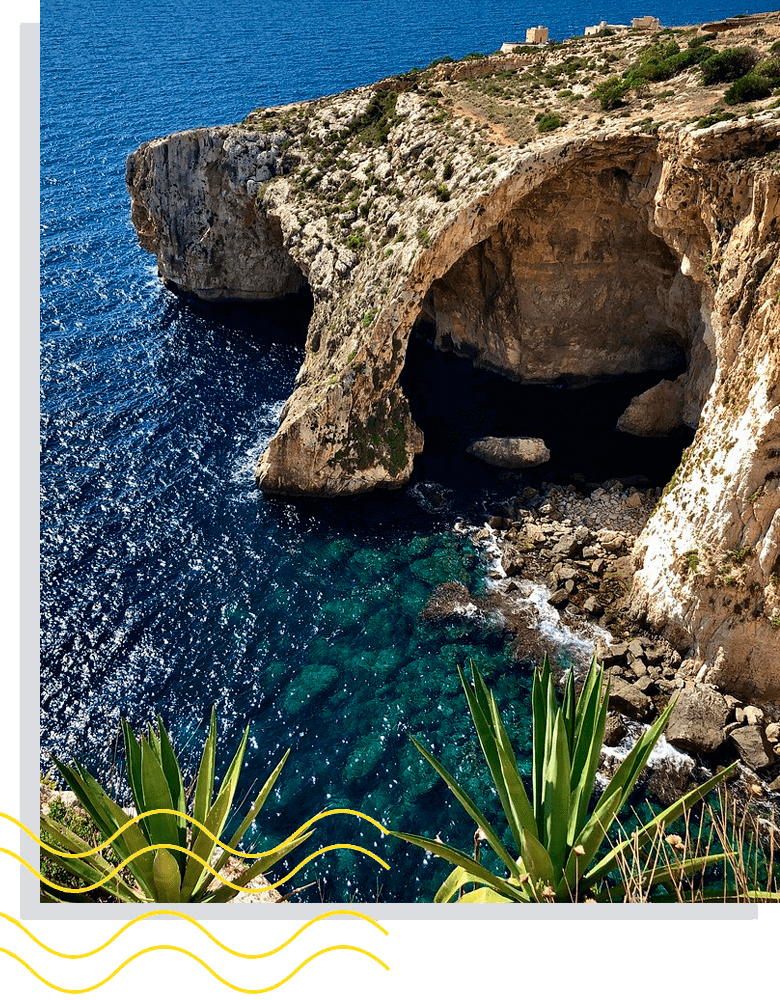
Blue Grotto
This natural scenic grottos in the middle of the cliffs by the water’s edge, reflects the brilliant phosphorescent colours of the underwater flora.
The Blue Grotto is located in Zurrieq Valley in the proximity of the town of Qrendi. A few caves, including the Blue Grotto, which is the biggest one, can be reached by boat from the bottom of the Valley. From a Logistic View Point one can also far see the small island of Filfa which is also part of the Maltrese Archipelago is an uninhabited island except for a unique species of lizards that live there. When Malta was under the British rule, the island of Filfla was used for target practice by the British Armed Forces. The island is now a Natural reserved and is protected under Maltese law.
Several legends and shark tales also surround this tiny island.
Comino & the Blue Lagoon
Comino Island lies in between her two sister islands Malta and Gozo. An almost uninhabited island with the main attraction being the beautiful Blue Lagoon amongst the other locations such as a couple of old buildings, a watch tower and a military barrack and an old church. Otherwise there are hardly any buildings on the island.
Nowadays Comino is mainly visited by tourists during the summer months. However, during the last 1000 years exiled knights, farmers, hermits, pirates, prisoners of war have been posted, imprisoned, settled or visited Comino. The historical evidence records that pirates and corsairs used the island during the Middle Ages as a base to raid Gozo and, Malta. The large number of caves provided excellent hiding places for them.
The Blue Lagoon with crystal clear turquoise water and white sand is by far the most popular sandy beach on the Maltese islands. A shallow area between a group of smaller islands of Cominotto and Comino, surrounding area is mainly rocky, there are narrow strips of sandy beaches on both sides of the lagoon. Another nice beaches around the coast of the islands are Santa Marija and St. Nicholas Bay.
Being an island one can only get there by means of a boat. Leave it up to me to help you get there.
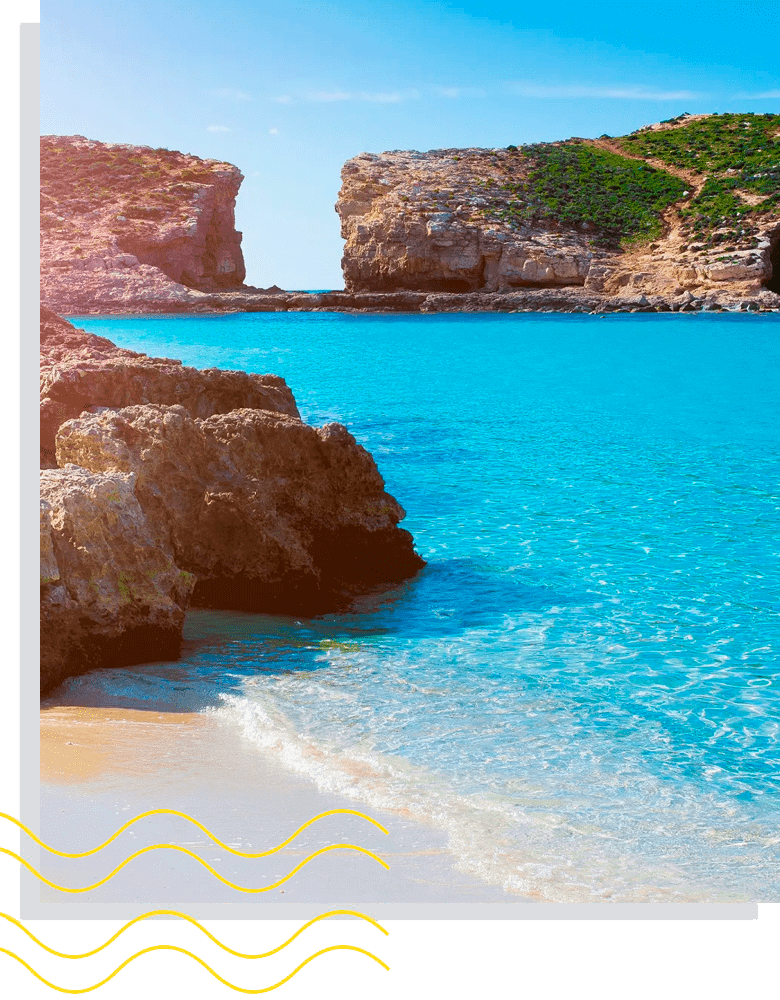
Gozo
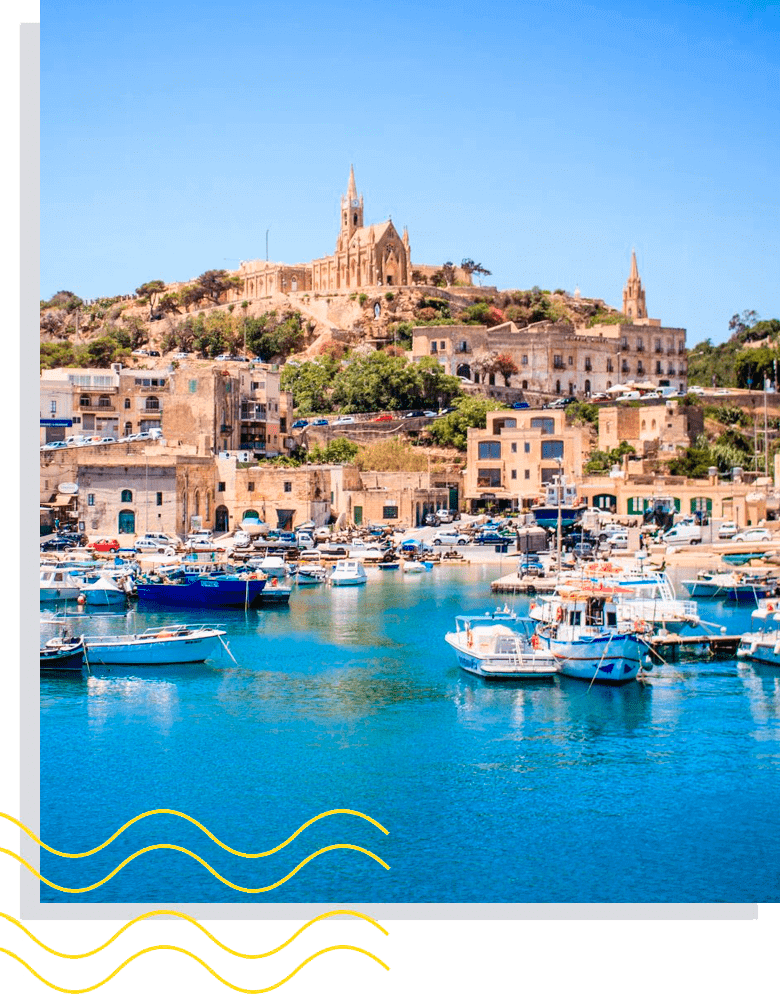
Gozo Island has a charm of its own. When looking for a place to unwind from busy day-to-day life; Gozo is the perfect island for just that. Rich with Baroque churches and Holy shrines are amongst lovely scenes of picturesque villages atop hills which are truly like little hamlets surrounded by countryside, separating them from each other. The Gozo Island is smaller than its sister island Malta but still has so much to offer.
Located in Victoria or Rabat as the locals refer to it, the Capital of Gozo, is defended by and old fortress - The Citadel is a must see which from the top of its walls you will have 360 degree views of the island. Other historic locations will include the Ġgantija temples, which, together with the Megalithic Temples of Malta, ranks the world’s oldest free-standing structures. The island of Gozo is also associated with Ogygia, the island home of the nymph Calypso in Homer’s Odyssey. One should always go and appreciate the fantastic view of the most famous sandy Beach from Calypso cave. The beach is known to the locals as is Ramla il Hamra – The Red Sandy Beach. Recently Sea turtles started using this beaches and the sand dunes to nest and lay their eggs. The lovely inlets of Xlendi’s fishing village, the famous Salt pans in Xwejni Bay and the surrounding Cliffs of Dwejra and the hidden rocky beach with the cliffs known as the inland Sea are also other locations not to be missed.
The Gozo gastronomy, its beaches, the quaint villages, the narrow streets and the slow pace of life, the scenery and the warm charm of the hospitable locals makes this tour a relaxing magical island to visit.
The Grand Harbour
The Grand Harbour known to the locals as Il-Port il-Kbir is a natural deep well sheltered harbour. It has been used as a harbour for more than 2000 years and has been developed and improved by those who took over and ruled the island throughout the centuries The Grand Harbour we see today was the base for the Knights of St John for from 1530 AD till 1798 was the scene of much of the fighting in the Great Siege of Malta when the Turks attempted to eject the Knights of St John, and after their departure became a strategic base for the British for a further 170 years. The whole area was savagely bombed during the Second Siege of Malta during World War II.
Harbours and docks are still active but with the departure of the British Military, today is much quieter than it was in the first half of the 20th century.
Following the upward trend of cruise liners visiting Malta, the Grand Harbour has been regenerated to welcome up to 7 Cruise liners berthing at once. The Cruise liner terminal is the developed in the baroque wharf built by the Portuguese Grand Master Pinto in the 18th century. It has been thoroughly renovated by a private consortium who run the Waterfront and offer management overseeing for Malta’s cruise liner business and is also being used as a venue with a concentration of Food and Beverage outlets.
We can organise Private Boat charters for a nice relaxing day around the Maltese coast up to the Blue Lagoon or other locations. I can also have a Private Harbour Cruises or even a nice Romantic Sunset Dinner around this Scenic Grand Harbour.
